
Art Nouveau is an international style of art, architecture, and applied art, especially the decorative arts. The style is known by different names in different languages: Jugendstil in German, Stile Liberty in Italian, Modernisme in Catalan, and also known as the Modern Style in English. It was popular between 1890 and 1910 during the Belle Époque period, and was a reaction against the academic art, eclecticism and historicism of 19th century architecture and decoration. It was often inspired by natural forms such as the sinuous curves of plants and flowers. Other characteristics of Art Nouveau were a sense of dynamism and movement, often given by asymmetry or whiplash lines, and the use of modern materials, particularly iron, glass, ceramics and later concrete, to create unusual forms and larger open spaces.

Henri Fantin-Latour was a French painter and lithographer best known for his flower paintings and group portraits of Parisian artists and writers.

Alfons Maria Mucha, known internationally as Alphonse Mucha, was a Czech painter, illustrator and graphic artist, living in Paris during the Art Nouveau period, best known for his distinctly stylized and decorative theatrical posters, particularly those of Sarah Bernhardt. He produced illustrations, advertisements, decorative panels, as well as designs, which became among the best-known images of the period.
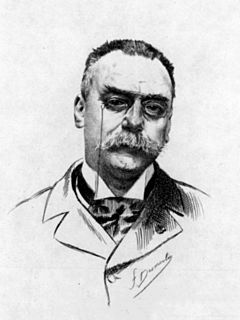
Eugène Samuel Grasset was a Swiss decorative artist who worked in Paris, France in a variety of creative design fields during the Belle Époque. He is considered a pioneer in Art Nouveau design.
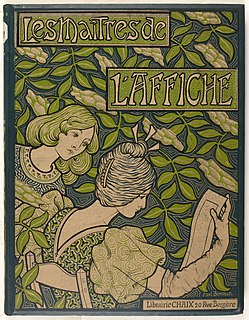
Maîtres de l'Affiche refers to 256 color lithographic plates used to create an art publication during the Belle Époque in Paris, France. The collection, reproduced from the original works of ninety-seven artists in a smaller 11 x 15 inch format, was put together by Jules Chéret, the father of poster art.

Félix Henri Bracquemond was a French painter, etcher, and printmaker. He played a key role in the revival of printmaking, encouraging artists such as Édouard Manet, Edgar Degas and Camille Pissarro to use this technique.

Henri Meunier was a Belgian Art Nouveau lithographer, etcher, illustrator, bookbinder and poster designer of the Belle Époque.
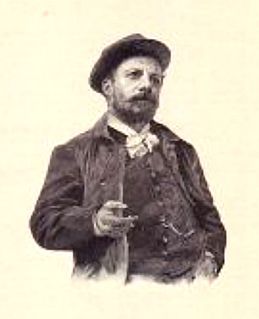
Henri Boutet is a French engraver and illustrator. He was born in Sainte-Hermine (Vendée) in 1851, and died in Paris on 9 June 1919. He was nicknamed the "little master of corset" or the "painter of the midinette"
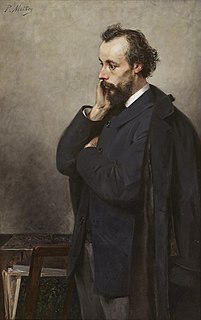
Henri Loÿs Delteil, also known as Léo Delteil was a French engraver, lithographer, illustrator, and art historian.
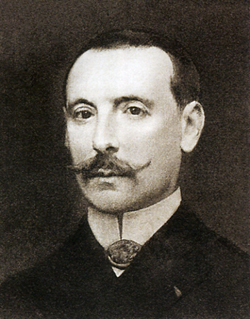
Henri Béraldi was a French bibliophile, publisher and author of books on the Pyrenees and on French printmakers of the 19th century.
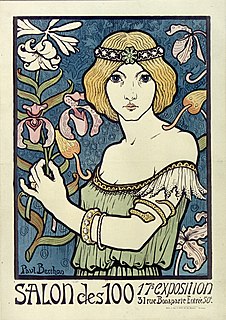
Salon des Cent was a commercial art exhibition in Paris, based at 31 Rue Bonaparte. The Salon sold color posters, prints and reproductions of artwork to the general public at reasonable prices. It was established in February 1894 by Léon Deschamps, founder of La Plume an avant garde literary and artistic magazine. It became known for its exhibitions showcasing the works of contemporary graphical artists. The salon held exhibitions until 1900. Many of the posters advertising Salon des Cent exhibitions have themselves become collectors' items.
Fernand-Louis Gottlob was a French graphic artist whose caricatures appeared in many humorous magazines.
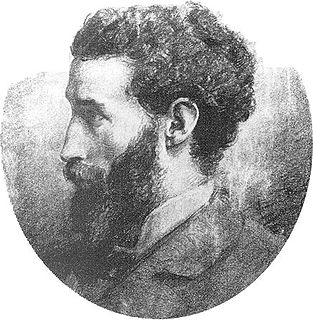
Armand Point was a French painter, engraver and designer who was associated with the Symbolist movement and was one of the founders of the Salon de la Rose + Croix. Later he formed his own atelier. Sources differ over the details of his birth and death.

Art Nouveau posters and graphic arts flourished and became an important vehicle of the style, thanks to the new technologies of color lithography and color printing, which allowed the creation of and distribution of the style to a vast audience in Europe, the United States and beyond. Art was no longer confined to art galleries, but could be seen on walls and illustrated magazines.
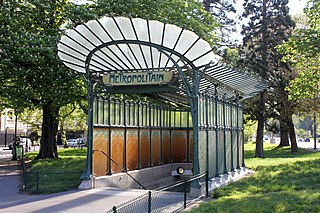
The Art Nouveau movement of architecture and design flourished in Paris from about 1895 to 1914, reaching its high point at the 1900 Paris International Exposition. with the Art Nouveau metro stations designed by Hector Guimard. It was characterized by a rejection of historicism and traditional architectural forms, and a flamboyant use of floral and vegetal designs, sinuous curving lines such as the whiplash line, and asymmetry. It was most prominent in architecture, appearing in department stores, apartment buildings, and churches; and in the decorative arts, particularly glassware, furniture, and jewelry. Besides Guimard, major artists included René Lalique in glassware, Louis Majorelle in furniture, and Alphonse Mucha in graphic arts, It spread quickly to other countries, but lost favor after 1910 and came to an end with the First World War.

Gisbert Combaz or Ghisbert Combaz was a Belgian painter, lithographer, illustrator, poster artist, furniture designer, sculptor, art educator, art historian and lawyer. He originally trained and practised as a lawyer, but gave up his legal career to dedicated himself to art education and art. He was one of the leading Belgian Art Nouveau artists. Despite his talents as a painter, he is now mainly known for his poster designs and postcards as well as his First World War drawings expressing his hatred for the German occupiers. His work showed a strong influence of his in-depth study of Japanese and Chinese art.

The whiplash or whiplash line is a motif of decorative art and design that was particularly popular in Art Nouveau. It is an asymmetrical, sinuous line, often in an ornamental S curve, usually inspired by natural forms such as plants and flowers, which suggests dynamism and movement. It took its name from a woven fabric panel called "Coup de Fouet" ("Whiplash") by the German artist Hermann Obrist (1895) which depicted the stems and roots of the cyclamen flower. The panel was later reproduced by the textile workshop of the Darmstadt Artists Colony.

L'Estampe originale was a French periodical publishing portfolios of original prints in a limited edition of 100 for subscribers. It produced nine issues quarterly between 1893 and 1895, containing a total of 95 original prints by a very distinguished group of 74 artists, including Henri de Toulouse-Lautrec, Gauguin, Renoir, Pissarro, Whistler, Paul Signac, Odilon Redon, Rodin, Henri Fantin-Latour, Félix Bracquemond, Félicien Rops and Puvis de Chavannes. Almost all of Les Nabis contributed: Pierre Bonnard, Maurice Denis, Paul Ranson, Édouard Vuillard, Ker-Xavier Roussel, Félix Vallotton, and Paul Sérusier. British artists included William Nicholson, Charles Ricketts, Walter Crane and William Rothenstein; besides Whistler, Joseph Pennell was the only American.
The Seasons or Four Seasons is the name of three different color lithograph series produced by Czech visual artist Alphonse Mucha. They were produced in 1896, 1897, and 1900.

Between the late 18th and early 19th centuries, the foundations of contemporary society were laid, marked in the political field by the end of absolutism and the establishment of democratic governments—an impulse that began with the French Revolution—and, in the economic field, by the Industrial Revolution and the consolidation of capitalism, which would have a response in Marxism and the class struggle. In the field of art, an evolutionary dynamic of styles began to follow one another chronologically with increasing speed, culminating in the 20th century with an atomization of styles and currents that coexist and oppose, influence and confront each other. The century began with the survival of Neoclassicism, a movement succeeded by Romanticism, Realism, Impressionism, Modernism and Symbolism.



























